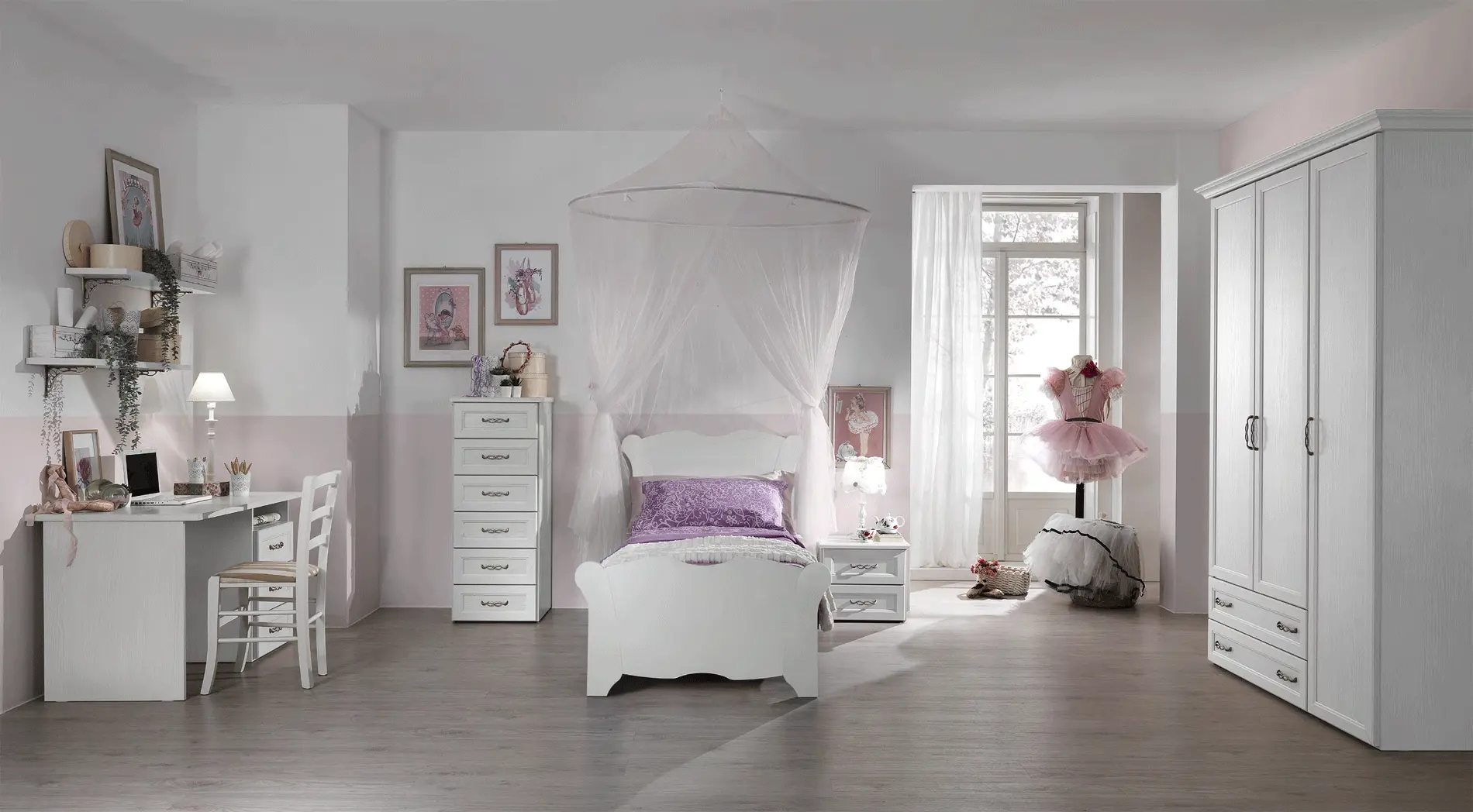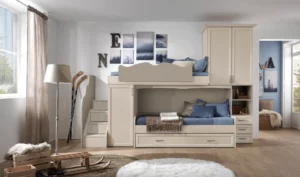Choosing the Right Youth Beds for Kids and Teens

Youth beds are an essential part of any child’s bedroom, offering not just a place to sleep but a space that can foster comfort, creativity, and organization. As children grow, their needs change, and so does their ideal sleeping arrangement. The right youth bed not only addresses these evolving needs but also complements the room's layout and style. This guide will delve into different types of youth beds, key features to consider, and the factors you should keep in mind when choosing the best option for your child’s room.
1. What Are Youth Beds?
Youth beds are designed specifically for children and teenagers, offering solutions that differ from standard adult beds. They come in various shapes and sizes to cater to the diverse needs of young users. From bunk beds to multifunctional storage beds, youth beds are built to maximize space, enhance safety, and meet the aesthetic preferences of kids and teens. These beds often incorporate features like built-in storage, safety guardrails, and customizable designs to suit different tastes and room layouts. Whether your child is a toddler, a preteen, or a teenager, a youth bed can play an important role in their daily routine.
2. Types of Youth Beds

When choosing the right youth bed, it's essential to consider the available space, your child's age, and how the bed will grow with them. The following are the most common types of youth beds:
a) Bunk Beds
Bunk beds are a classic choice for siblings sharing a room or for children who regularly have sleepovers. These beds feature two stacked sleeping areas, which maximize vertical space. Bunk beds are typically designed with safety in mind, incorporating sturdy ladders and guardrails on the top bunk to prevent falls. Many modern bunk beds also come with added features, such as built-in storage drawers, trundle beds for extra sleeping space, and even desks underneath for studying or crafting.
b) Loft Beds
Loft beds are elevated sleeping platforms that create space underneath for various uses. This makes them perfect for children and teens who need extra room for a desk, seating area, or storage. Loft beds are ideal for smaller rooms, as they make use of vertical space rather than taking up valuable floor space. Teenagers especially appreciate the ability to create a personalized space beneath the bed, often using it for a study area or a place to hang out with friends.
c) Mid-Sleepers
Mid-sleepers are beds that are raised slightly off the ground, offering the benefit of additional storage underneath. The height of the mid-sleeper allows room for storage bins, toys, or even a small desk area. These beds are a great option for younger children, as they are low enough to allow easy access while providing ample space for organizing their belongings.
d) High Sleepers
High sleepers are similar to loft beds, but they tend to offer more space underneath. These beds are designed for older children and teenagers who need more storage or want a dedicated area for studying or lounging. The elevated design of high sleepers can free up enough floor space for a couch, a TV, or even a small bookcase. These beds can often be customized with additional furniture pieces or accessories to suit the user's specific needs.
e) Specialty Beds
Specialty youth beds have gained popularity, offering fun and imaginative designs that cater to children's interests. For example, gaming beds are equipped with features like built-in speakers or shelves for game consoles, while themed beds (like castle or treehouse designs) can make bedtime feel like an adventure. These specialty beds combine functionality with creativity, allowing kids to express their unique personalities.
3. Key Features to Look For
When choosing a youth bed, it's crucial to focus on features that enhance both safety and convenience. Here are the key attributes to consider:
a) Safety and Durability
One of the most important considerations for a youth bed is safety. Look for beds that are made from durable materials, such as solid wood or reinforced metal. Ensure that the bed has rounded edges and smooth finishes to reduce the risk of injury. For bunk beds and loft beds, guardrails are essential to prevent falls, especially on the top bunk. Additionally, check the weight capacity to ensure that the bed will be able to accommodate your child as they grow.
b) Size and Growth Adaptability
As your child grows, their needs change. Youth beds should be adaptable to accommodate growth. Many youth beds come with extendable features, allowing the bed frame to grow as your child does. Some beds are designed to transition from a toddler bed to a full-sized single bed, and others can even be converted into a double or larger bed as your child enters their teen years. Choose a bed that offers flexibility, so you don’t need to replace it too soon.
c) Storage Solutions
Storage is always an important factor in a child’s room. Many youth beds are designed with built-in storage options, such as drawers beneath the bed, shelves, or hidden compartments. These features can help reduce clutter and provide a space for toys, clothes, and books. Beds with trundle storage also offer the added benefit of an extra sleeping area when needed, making them ideal for sleepovers or guests.
d) Design Appeal
Children and teenagers often have strong opinions about the style and design of their rooms. When choosing a youth bed, take your child’s preferences into account. Younger children might love beds with bright colors or playful themes, such as race cars or princess castles, while teens may prefer a more neutral or modern design. Ensure that the bed’s design fits with the overall room decor, helping to create a cohesive look.
4. Practical Considerations
Beyond design and features, there are a few practical considerations that will affect the selection of the best youth bed:
a) Room Size and Layout
Before purchasing a youth bed, assess the size of your child’s room. If space is limited, opt for space-saving designs like bunk beds or mid-sleepers that make efficient use of vertical space. Loft and high sleepers are also great choices for smaller rooms, as they leave the floor open for other furniture and activities. If the room is larger, you have more flexibility in choosing a bed that suits your child’s needs.
b) Age and Development
The age of your child plays a major role in determining the best bed type. For toddlers and young children, low-profile beds with safety rails may be more appropriate, as they provide ease of access and help prevent falls. For older children and teens, loft or high sleepers might be a better fit, as they offer more space and can accommodate study areas or personal storage. As children age, they may also prefer a bed that matches their growing need for independence and privacy.
c) Ease of Maintenance
youth beds can take a lot of wear and tear over time, so it’s important to choose one that is easy to maintain. Materials like solid wood or metal tend to last longer and are easier to clean. Additionally, opt for beds that have removable parts or covers, such as under-bed drawers or cushions, to make cleaning simpler. It’s also important to check for any sharp edges, cracks, or loose parts during regular inspections to ensure the bed stays safe.
5. Maintenance and Care Tips
Proper care can prolong the lifespan of your youth bed, ensuring that it remains safe and functional. Here are some maintenance tips:
- Regular Inspections: Periodically check for any loose screws, damaged guardrails, or worn-out ladders, especially on bunk and loft beds.
- Cleaning: Use a damp cloth to wipe down the bed frame regularly. Wooden frames should be dusted frequently and treated with appropriate furniture polish to maintain their finish.
- Mattress Care: Rotate the mattress every few months to ensure even wear and maintain its comfort level.
6. Conclusion
Selecting the right youth bed is a decision that should consider your child’s safety, growth, and comfort. Whether you choose a bunk bed, loft bed, or a specialty design, the bed should support both your child’s needs and preferences. Additionally, opting for beds with built-in storage or adaptable designs can help manage limited space and foster organization. Ultimately, the best youth bed is one that provides a comfortable, secure, and practical environment for your child to rest, study, and play.